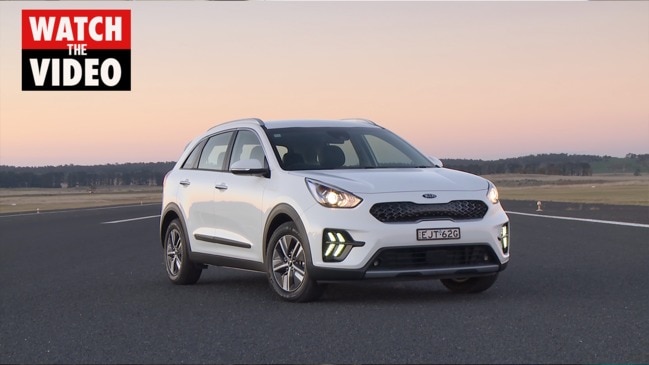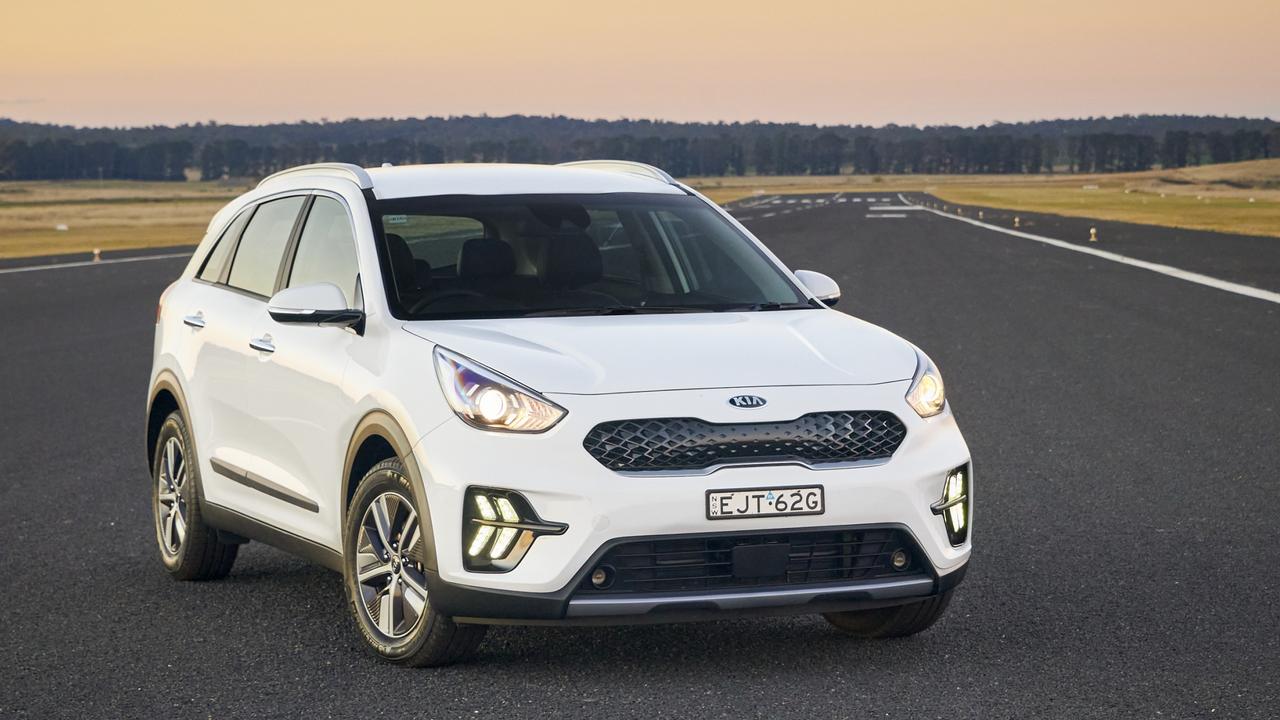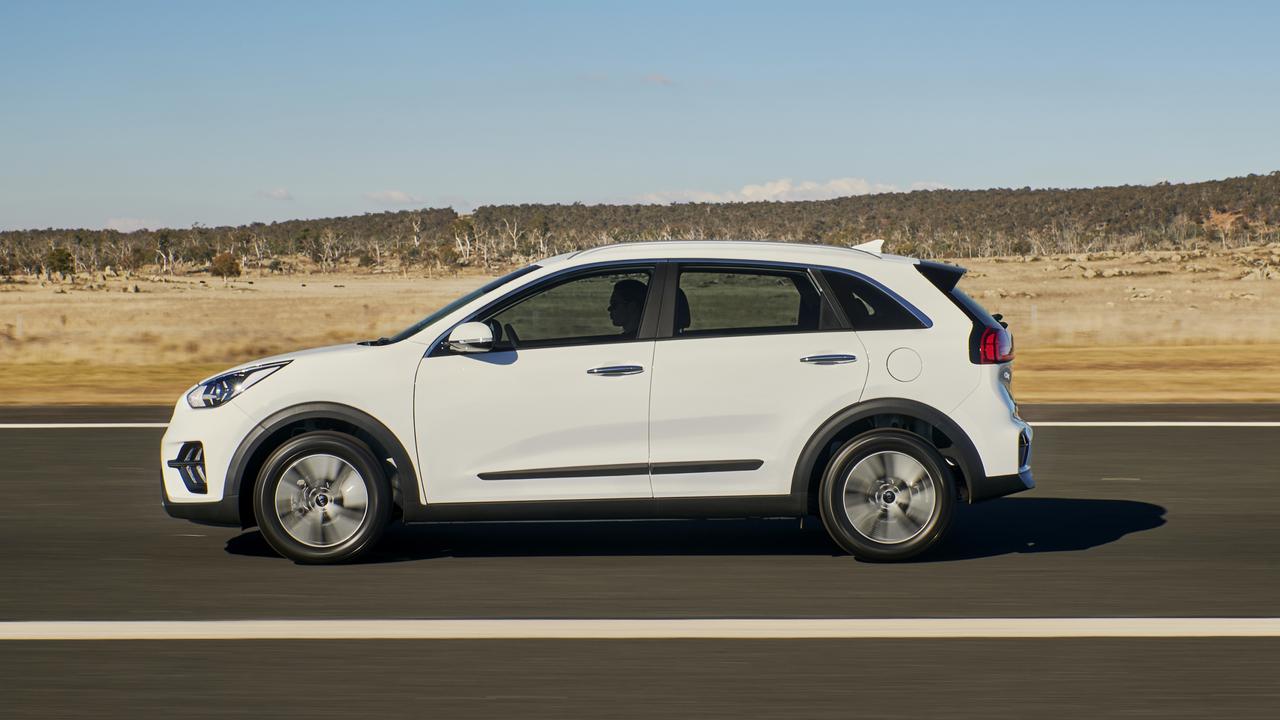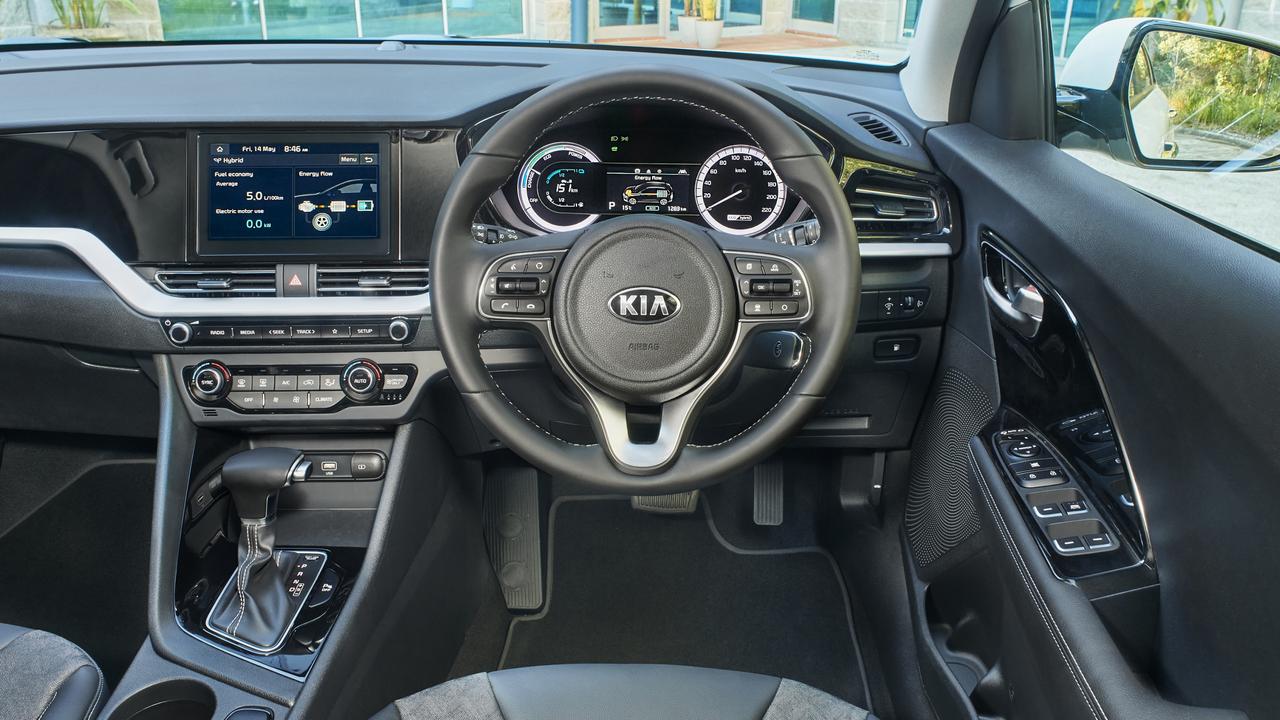2021 Kia Niro hybrid review: Fuel sipper has a lot going for it
Electric cars are expensive, but if you want to lower your reliance on petrol than there are other options that are more affordable.

If you want to do you bit for the environment, but can’t afford an electric car then Kia’s Niro hybrid could be the vehicle for you.
Here are five things you need to know about the Kia Niro hybrid.

IT DOES WHAT IT SAYS ON THE LABEL
The Niro Hybrid is Kia’s first foray into hybrid vehicles and it doesn’t disappoint from a fuel consumption perspective. The official label says it will sip just 3.8 litres of fuel every 100km and we saw less than that during a mix of freeway and city driving. It has a 45-litre fuel tank, which gives it a theoretical range of more than 1110km. We don’t doubt you could do that if you went light on the throttle. The fuel consumption stacks up well against Toyota’s popular RAV4 hybrid, which uses 4.7L/100km. The RAV4 is a much bigger vehicle, though. If you want to be even more miserly you can plump for a plug-in hybrid version, which uses just 1.3L/100km on the official cycle, thanks to its ability to run for up to 58km on electricity alone.

THE VALUE EQUATION DOESN’T QUITE ADD UP
It might be spectacularly efficient but the Niro hybrid is also very expensive compared with conventional petrol SUVs of the same size. The more stylish and modern looking Kia Seltos is cheaper and better equipped, while you can get the larger, more powerful Toyota RAV4 Hybrid for less money as well. Prices start at $41,990 drive-away for the S model, rising to $45,990 for the Sport model. That’s a lot of dough for an SUV that’s based on the same underpinnings as a Seltos. For reference, the similarly equipped Seltos Sport with the safety pack is $32,790 and the better equipped Seltos Sport Plus costs just $35,290. Then again, it’s cheap compared with the Niro plug-in hybrid, which starts at $49,990 drive-away.

THE FEATURES LIST ISN’T VERY LONG
The Niro caters to younger buyers with wireless Apple CarPlay and Android Auto, while back-seat passengers are treated to their own airconditioning vents, which are rare on a car this size. But front parking sensors and built-in satellite navigation are missing. It also misses out on some active safety gear, including blind-spot warning and rear cross-traffic alert, which are standard on a lot of cheaper cars.

A NEW MODEL IS ON THE HORIZON
The Niro arrived in Australia late in its product cycle. An all-new model arrives in the middle of next year, so you’re effectively buying a run-out model. That means there could be some deals in the New Year if you’re able to wait. The Niro is starting to show its age in some areas. The cabin is pleasant enough but the centre screen is smaller than the Seltos and it doesn’t have the digital driver readout that recently debuted in the Sportage. The exterior styling looks a little plain, too. The cabin has decent room, with attractive cloth and imitation leather trim that should wear well.
IT’S FOR FUEL MISERS, NOT REVHEADS
The Niro is powered by a 1.6-litre petrol engine supplemented by a small electric motor. The power outputs of the petrol engine are modest (77kW and 147Nm) and you need to rev it hard to access those numbers. A 44.5kW electric motor helps the Niro get off the line reasonably smartly, boosting the combined power to a more respectable 104kW. Steering and cornering are sharp enough for a city SUV and the suspension does a reasonable job of cushioning occupants from road imperfections, although it can get a little noisy on coarser road surfaces.




